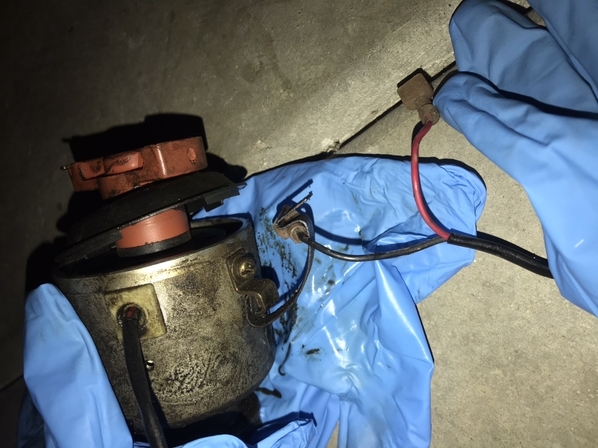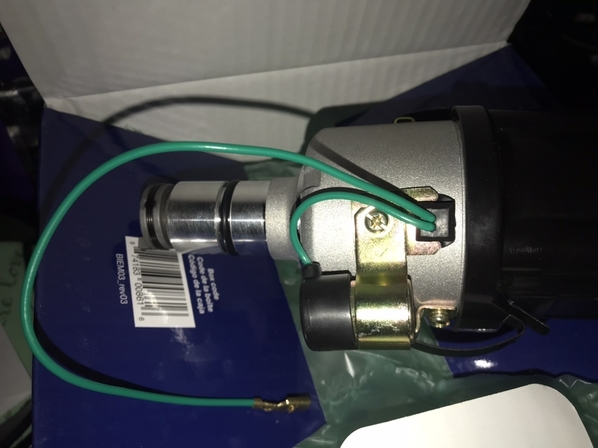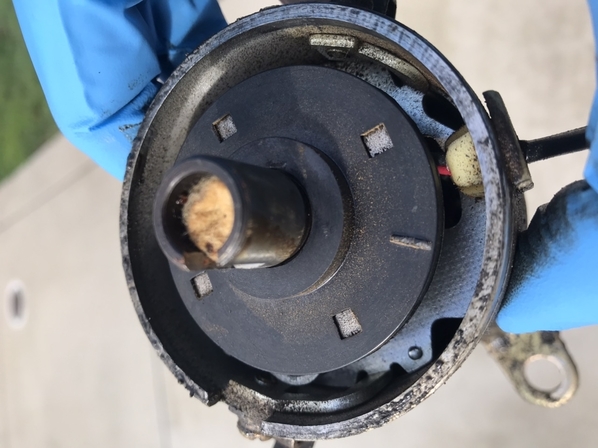@Ryan (formerly) in NorCal--
Click this link for the wiring diagram for an original (1970) Beetle. It might help clear up your original question.
That's an aftermarket Comp-u-Fire module in the old distributor (or the EMPI clone). The new distributor is points and a capacitor. Points are extremely old-school (not that there's a single thing wrong with that)-- kind of the drum brakes of ignition. The Comp-u-Fire makes things wayyyyy easier for a home mechanic.
I'm just guessing here, but you probably pulled the plugs and bought the distributor and wires based on the soot on the plugs, correct? You likely don't need them, if you can take what you've got back.
If you want to proceed, your existing points replacement module has two wires, the red one is connected to keyed power (probably coming from the "15", or "+" terminal) on the coil, and the black one is connected to the negative terminal ("1" or "-") on the coil. On the new one, you'd connect the green wire to the negative terminal on the coil and lose the red one altogether.
... but there are other things to consider here. One is that the distributor has to be in the proper position for the car to start, then you'll need a timing light to set the final timing. You'll also need a tach/dwell meter to set the points correctly. It'd be a lot easier to move the module over-- but once you do that, you may as well just leave the entire distributor.
If you are concerned with the condition of your ignition system, changing the cap and rotor is what we always used to do in a tune-up (if your distributor was using points and condenser, we'd change those as well). The distributor never got replaced unless there was something wrong with the advance curve.
... but back to the black plugs. I'd be willing to bet that even a properly set up and operating ignition won't fix the black plugs. Hotter plugs might help, but I'd be willing to bet money that the problem isn't ignition at all. I'd bet you have dual Kadrons, don't you?
Kadrons always run rich. You can work on leaning them out, but they're pretty bad on the idle circuits and the needle and seat are really terrible. If you are generally satisfied with how the car runs (and with getting less than 20 mpg with a sub-100 hp engine), then change the cap/rotor/wires and the spark-plugs with something at least one step hotter.
Good luck.









